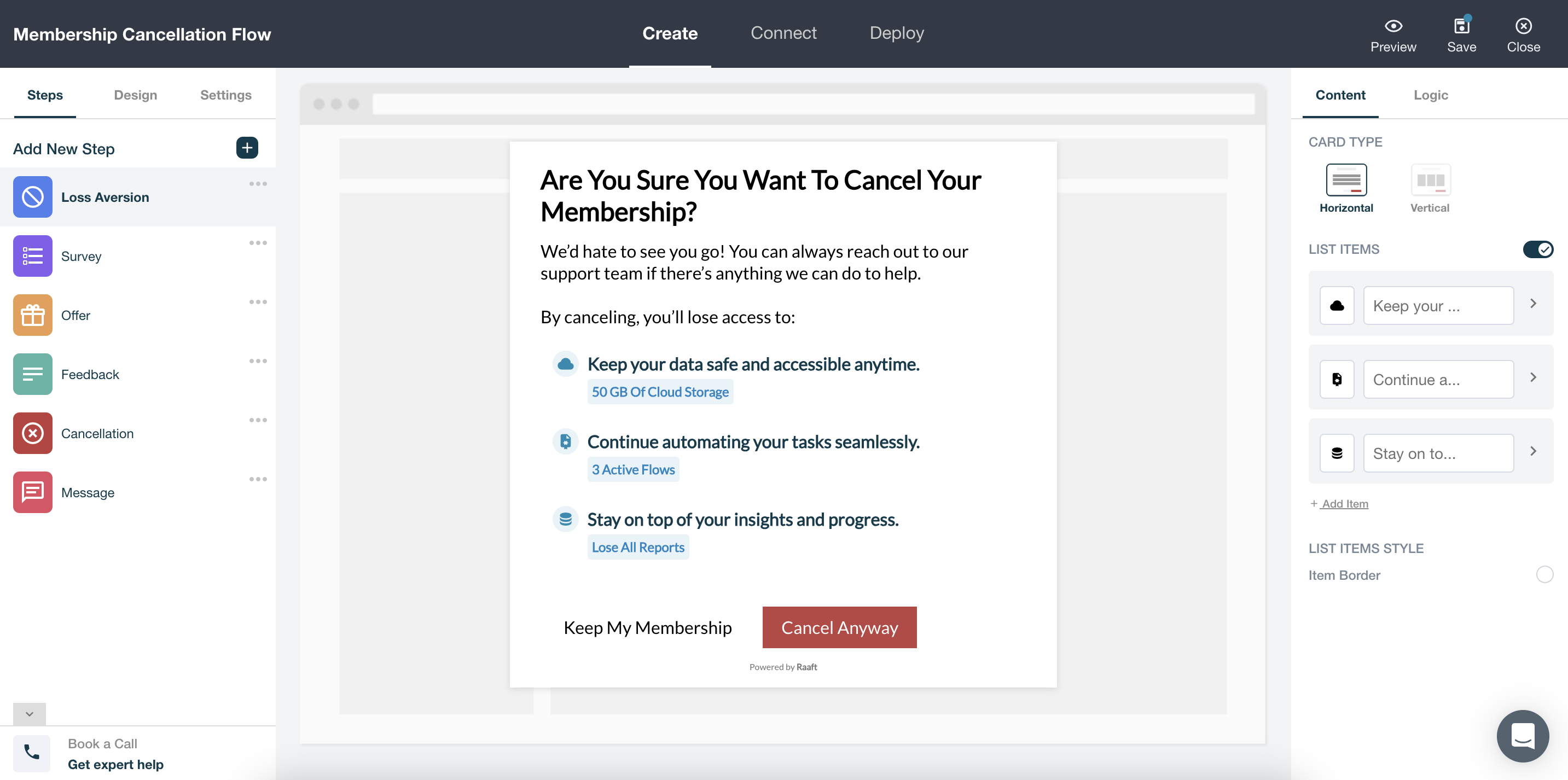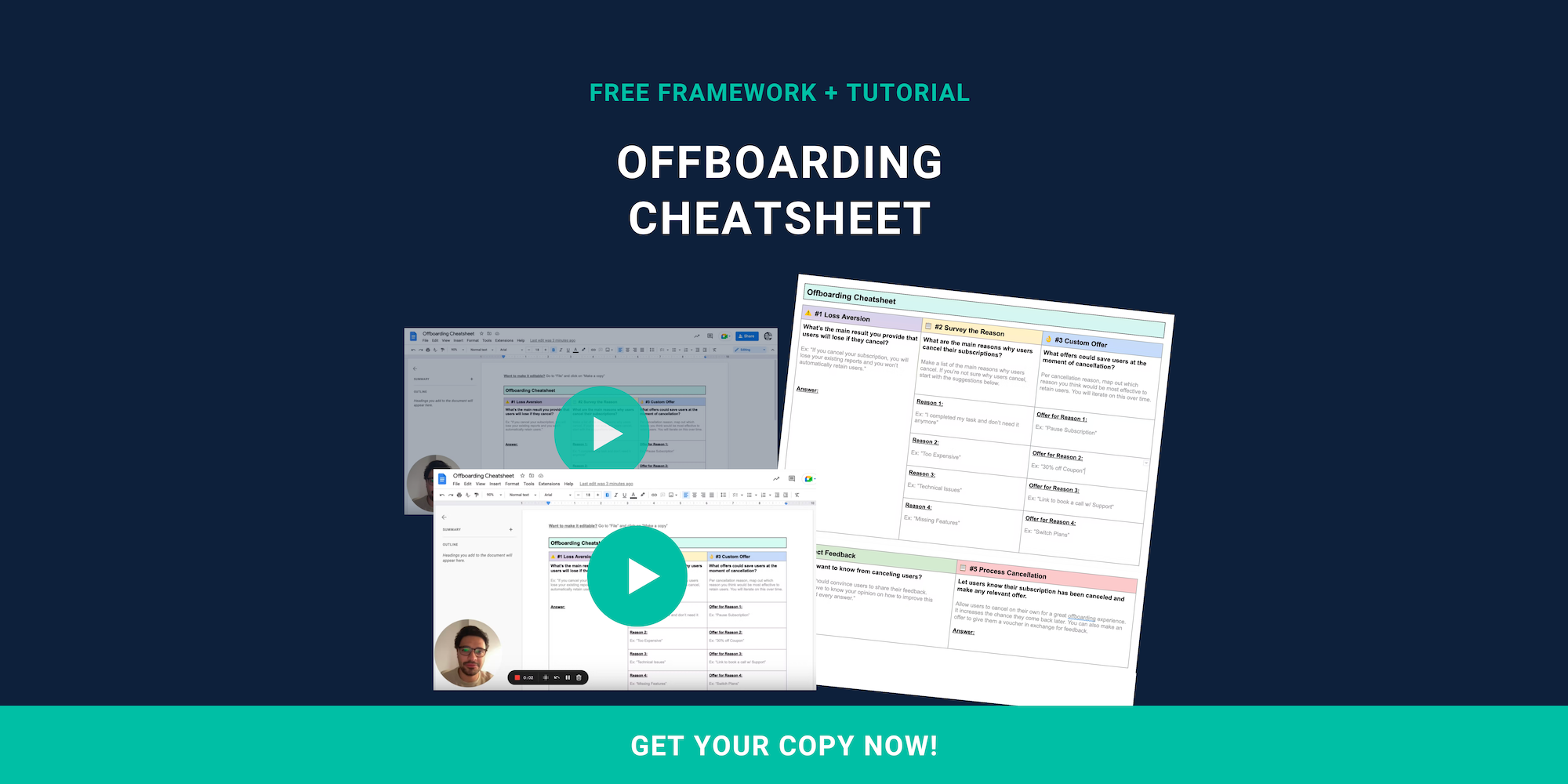Customer exit surveys are one of the most overlooked tools in retention.
Acquiring a new customer can cost 5 to 25 times more than keeping an existing one. Yet most businesses don’t ask why people leave - or if they do, they bury the question in a long, poorly timed survey.
Email-based exit surveys average an 8% response rate. In-app surveys triggered during cancellation perform far better. Website exit surveys vary from 5% to nearly 60%, depending on placement. When poorly positioned, response rates can drop to around 1%.
Survey length matters too. Completion rates are 89% for surveys with 10 questions, but fall to 79% for surveys with 40. Keeping it to 4–5 focused questions is ideal.
The type of question matters. Groove boosted its exit survey response rate by 785%, from 1.3% to 10.2%, simply by switching from closed-ended to open-ended questions.
And the payoff? Companies that act on exit survey insights have reported up to a 20% improvement in retention.
If churn is a concern, asking the right questions at the right time is one of the smartest moves you can make.
How To Write The Best Customer Exit Survey Questions

Never ask an exiting customer a question for the sake of it.
Every question you ask should have a purpose behind it.
The fewer questions you ask, the more likely the exiting customer is to not only answer them but also offer detailed, useful responses.
With this in mind, you should be extremely deliberate about the types of questions you ask.
I’ve listed a few questions below to help get your creative juices flowing.
20 Key Questions & Why They’re Impactful
- "What is the primary reason for ending your subscription with us?"
Impact: This open-ended question allows customers to express their concerns freely, providing us with honest and often unexpected insights.
- "How would you rate your overall experience with our product on a scale of 1-10?"
Impact: This quantitative measure helps in identifying overall customer satisfaction and areas needing improvement.
- "Did you encounter any problems with our product or service? If yes, please describe."
Impact: Identifies specific issues with the product or service, allowing us to pinpoint areas for immediate improvement.
- "How did our customer support team meet your needs?"
Impact: Evaluates the effectiveness of the customer support team and highlights potential areas for training or process enhancements.
- "What could we have done differently to keep you as a customer?"
Impact: Offers direct insights into potential changes or enhancements that could improve customer retention.
- "Would you consider returning to our service in the future? If so, under what conditions?"
Impact: Provides an understanding of potential re-engagement strategies and long-term customer relationship management.
- "How well did our product meet your expectations?"
Impact: This question helps gauge if the product was misaligned with customer expectations, a key factor in customer satisfaction and retention.
- "Was there a feature or functionality you felt was missing from our service?"
Impact: Directly addresses product capabilities and can highlight crucial gaps impacting customer satisfaction.
- "How do you rate the value for money of our service?"
Impact: This question tackles the customer's perception of the product's cost-effectiveness, which can be a decisive factor for retention.
- "Please rate the ease of use of our product on a scale from 1 to 10."
Impact: Focuses on the user experience aspect of the product, identifying if complexity or poor design contributed to the churn.
- "Did you experience any issues or challenges with our customer service? If so, please describe."
Impact: Addresses the effectiveness and efficiency of customer support, which can be a critical factor in customer loyalty.
- "What, if anything, could we have done to keep you as a customer?"
Impact: A direct query that can provide actionable feedback on possible improvements or changes.
- "How likely are you to recommend our product to others, and why?"
Impact: Gauges the customer's overall satisfaction and the likelihood of positive or negative word-of-mouth.
- "Did you find an alternative solution that better fits your needs? If so, can you specify what it offers that our service does not?"
Impact: Helps in understanding competitive weaknesses and what customers might be seeking elsewhere.
- "What are the top three things you enjoyed about our service?"
Impact: Identifies strengths that can be leveraged or expanded upon, providing a balanced view of the product's offerings.
- "Would you consider rejoining our service in the future? If so, under what conditions?"
Impact: Explores the possibility of re-engagement and what changes would be necessary to facilitate it.
- "How well did our service integrate with your existing workflows or tools?"
Impact: Addresses compatibility and integration issues, which are critical for user convenience in SaaS products.
- "Was there any aspect of our service that you found particularly challenging or frustrating?"
Impact: Aims to identify specific pain points or obstacles that could have contributed to the customer's decision to leave.
- "How would you describe your overall customer journey with us, from onboarding to exit?"
Impact: Provides a comprehensive view of the customer's experience, highlighting areas for improvement throughout the customer lifecycle.
- "What was the single most important factor in your decision to cancel?"
Impact: This forces prioritization, helping us identify the most influential cause of churn and focus efforts on addressing the root issue that mattered most to the customer.
How I Analyze & Utilize Survey Responses

What do all of the above customer exit survey questions have in common?
They all link to the customer experience and value proposition.
As you begin to analyze survey responses, you should think about how you can improve customer experiences and the value proposition of your SaaS product.
I’m Always Trying To Spot Trends
Analyzing exit survey data often reveals common themes and trends.
I want to find things I can act on.
This is really important for product development.
I need to know what direction to steer the product in.
If I can tap into their perspectives, this will help me reduce customer churn.
I’m Making Real-World Adjustments Based On Feedback
Here’s an example:
Several customers cited the lack of a specific feature as their reason for leaving.
Addressing this gap not only reduced churn but also attracted previous customers back to our platform.
Making tweaks and changes to our SaaS product
What About The Emotional Aspect Of Exits?
I’ve found that recognizing the emotional undercurrents in survey responses is vital.
The frustration, disappointment, or changing needs behind each answer are key to truly understanding our customers.
Even as customers exit, I think it’s really important to maintain a positive relationship.
You should go out of your way to show appreciation for their feedback.
This can leave the door open for future re-engagement.
I Believe Customer Exit Surveys Are Essential For Continuous Learning

Customer exit surveys are pivotal in learning about your users.
They provide a deeper understanding of customer experiences and needs.
As we continue to learn and adapt based on this feedback, we not only improve our products but also strengthen our relationships with our customer base, laying the foundation for a resilient and customer-centric business.
Using Raaft, you can build custom cancellation flows from scratch, which include customer exit surveys.
This is a must-have tool for SaaS teams looking to tighten their cancellation flows and not only reduce churn, but also learn more about their customers.
You can get started with Raaft for free today.

Offboarding Cheatsheet
This framework + video tutorial will help you design a better cancellation process.
Some of our featured articles

Adam Crookes

Adam Crookes

Miguel Marques
Customer Success insights in your inbox
Helping Founders and Customer Success Managers handle customer retention effectively.
We will only ever send you relevant content. Unsubscribe anytime.


